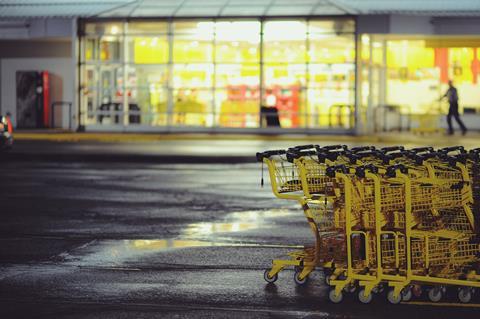
In the UK, supermarkets consume approximately 3% of the nation’s electricity production. It’s not a huge surprise when you look at Iceland, for example. A third of its sales are from frozen foods, and freezers have a notorious appetite for energy. Last year, Iceland’s energy bills were a staggering £70m. Current figures for 2022 suggest they are on course to double that.
While supermarkets struggle under the pressure of up to 100% energy cost increases, they continue to waste energy at an industrial scale. But what if supermarkets became part of the solution?
Keeping food fresh in cooling displays and freezers accounts for most of the energy consumption in a supermarket. A study carried out by the Defra revealed supermarket fridges and freezers alone are responsible for 30% to 60% of energy used by supermarkets. That’s 1% of the UK’s total energy usage, enough to power 800,000 homes.
These same cooling systems also generate significant amounts of excess heat, which is usually released directly into the atmosphere and wasted.
Let’s pause on that point: we are currently in an energy and cost of living crisis, yet excess heat is being released and wasted on a daily basis across the country.
In order to become truly green and cost-efficient, supermarkets must find innovative ways to recycle and reuse the vast quantities of energy they consume and the heat they release every day.
In what may seem like a fairytale, the blueprint for the next-generation, energy-efficient supermarket can be found in the SuperBrugsen store in the small Danish town of Høruphav, where 78% of the supermarket’s heat consumption has been covered by reused heat from cooling processes.
Several interlinked initiatives have driven the results, but the key one is that a heat recovery unit was installed, which recovers the waste heat from CO2 refrigeration systems. The recovered heat is reused to heat up the store and produce domestic hot water for the wider community.
The supermarket also runs energy efficiency programs, which have lowered energy consumption at the supermarket even more. But the real success is the supermarket has been able to export 133 MWh to local buildings through a district heating grid since 2019. District energy is a collective system that supplies an entire area with heating or cooling. For context, 1 MWh is enough to provide 330 homes electricity for one hour. For local shoppers, this means the same energy that cools their groceries is also used to warm their homes.
To buffer themselves from soaring energy costs this winter, supermarkets and other businesses must consider how to recycle the energy that otherwise gets wasted into the atmosphere. By upgrading archaic, energy-sapping supermarkets into green, hyper energy-efficient ones, supermarkets can resurrect their public image as community hubs whilst slashing emissions and energy costs.
For supermarkets, the cheapest and greenest energy is the energy not used. The energy crunch provides yet another compelling reason for accelerating towards a greener, more circular economy. Supermarkets have the opportunity to lead the charge. They should seize it.



















No comments yet